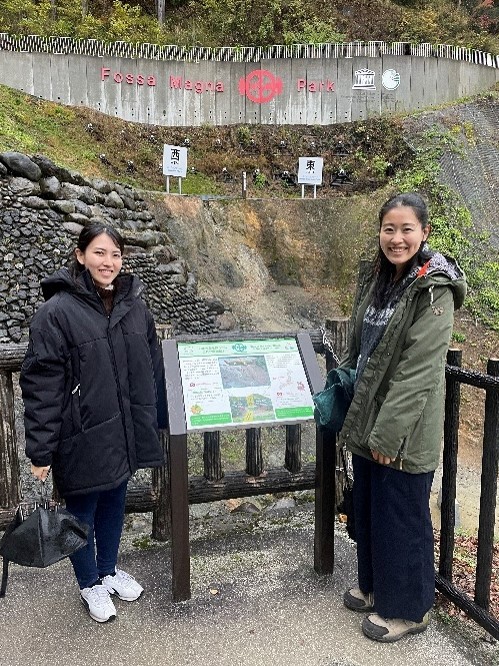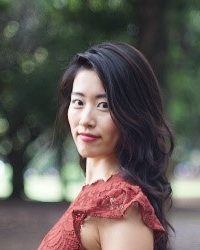
Itoigawa, the ‘Town of Stones’: The Appeal of Geoparks as Protected by Youth
Itoigawa Geopark, located in Itoigawa City, Niigata Prefecture, was one of the first places in Japan to be certified as a UNESCO Global Geopark. This geopark not only serves as a platform to learn about the formation of the Japanese archipelago from the Fossa Magna fault that divides Japan into two, but also offers visitors a glimpse into diverse ecosystems that differ based on the altitude of the majestic mountains. Additionally, it is the world’s oldest birthplace of Jadeite, a type of rock that exists only in the subduction zones of the plates that cover the Earth’s surface. Jadeite was designated as the national stone of Japan in 2016. For a long time, the people of Itoigawa have recognised the value of jade and used it, making their city the birthplace of the world’s oldest jade culture.
Itoigawa boasts beautiful views of the Northern Alps and the Sea of Japan. It is easily accessible from Tokyo via the Hokuriku Shinkansen in approximately two hours. There are multiple points of attraction, including opportunities to learn about culture, history, and geology. We decided to visit the site because of its many attractive points, such as its active role in Geopark education in schools.

As part of our visit, we interviewed Ms. Torigoe and Ms. Koriyama about Itoigawa UNESCO Global Geopark’s existing and future plans for youth involvement.
Q: “Do you have any involvement with youth at the Itoigawa Geopark Secretariat?”
While we conduct Geopark education at schools for elementary, junior high, and high school students, there is currently little involvement with the so-called youth (ages 18-29) in Itoigawa City. This is partly due to the fact that there are no universities in the city.
Q: What is the status of Geopark studies at elementary, junior high, and high schools?
For elementary and junior high schools, following a proposal from the Board of Education, we provide education focusing on the theme of the coexistence of nature and people, in cooperation with the City Hall. For high schools, we conduct educational activities tailored to the needs of the schools, taking place in the Geopark. At some schools, we offer education on disaster prevention and nature while we conduct workplace tours at the Fossa Magna Museum for others. In addition, there is a sister school relationship with the Hong Kong Geopark. Before the COVID-19 pandemic, exchange activities were conducted with high school students from Itoigawa doing fieldwork in the Hong Kong Geopark. All these activities are being undertaken in the hope that the students will realize how precious their hometowns are and return to their hometowns after they grow up.

Photo provided by: Itoigawa Geopark Council
Q: How is your involvement with youths from other areas?
There are a few, but some visit us for their research. Since weat Itoigawa Geopark have a partnership agreement with Niigata University, many students come specifically from that university.
Q: What measures have been taken so far to attract the youth generation to the Geopark or to stimulate their activities? Are there any issues that have been identified through the measures?
Although we have done some research exchanges with other researchers, unfortunately, we have not implemented in-depth measures.
Since Itoigawa City does not have universities, there is not much involvement with young people over 18. Beyond efforts within elementary, junior high, and high schools, it will be essential to have measures to encourage U-turn and I-turn to increase the migration, settlement, and involvement of people in their 20s.
Q: What role do you seek from outside organizations?
Different stakeholders are involved in the Geopark. I would like to see more progress in using Geopark elements as added value for businesses intertwined with tourism and local products. Currently, the main industries involved as stakeholders in this Geopark are primary industry, construction, services, and transportation. Yet, we also hope that the tourism industry and nature guides will be recognised as more valuable occupations, leading to greater employment opportunities.

Q: Even though we say “youth,” there are various factors such as age, affiliation, and nationality. What kind of “youth generation” would you like to see involved in the future?
Itoigawa has various attractions, such as hot springs, the Museum of Natural Science, and Fossa Magna Park. We want a wide range of people to be involved in the Geopark, including tourists who become interested in this Geopark when they stop by Itoigawa, and conversely, people who are initially interested in the Geopark who are also attracted by the cultural and tourist value of Itoigawa. We also welcome researchers to make our Geopark the subject of their research.
Q: What do you expect from the Youth Committee of Japanese National Commission for UNESCO?
I hope they will start their activities by visiting Geoparks in their respective regions to learn more about the areas’ attractions and current conditions. It would be great if we could connect with students living in the area and engage with these children, giving them the opportunity to realise and think about the attractions and issues in their own communities.
We would also like the opinions of the Youth Committee of the Japanese National Commission for UNESCO on what angles and in what way to communicate on social networking sites, etc., to appeal to our target audience.
Interviewers’ thoughts

Yuki Hosoya
Our visit to Itoigawa was an excellent opportunity to experience the easy accessibility – 2 hours by Shinkansen from Tokyo, and the geological features, nature, traditional culture, and charm of the Geopark, which is only two hours from Tokyo by the Shinkansen bullet train. By visiting the city and the museum, we were able to learn about the transition of the land, which has the world-renowned jade production center, has been shaped through its long history. We appreciate that we had some discussions with local people about their expectations and challenges for the future, and youth improvement. As a member of the Youth Committee of the Japanese National Commission for UNESCO, we would like to promote the area’s attractiveness and create opportunities for interacting with local youth in the future.
*This is an English translation of an article that was originally written and published in Japanese on 14 September 2023. (https://unesco-sdgs.mext.go.jp/column/youthnote-20230914)
DATA
| Date | 23 November 2022 (Wednesday) |
|---|---|
| Location | Fossa Magna Museum |
| Interviewees | Ms. Hiroko Torigoe (Secretariat for the Itoigawa Geoparks Council, Office for the Promotion of Geoparks, Commerce and Tourism Section, Department for Industries in Itoigawa City) |
| Interviewers | Kobayashi and Hosoya (Youth Committee of Japanese National Commission for UNESCO) (as of November 2022) |
| References | Itoigawa UNESCO Global Geopark(https://geo-itoigawa.com/index.html) |
This is an English translation of an article that was originally written and published in Japanese on 14 September 2023. (https://unesco-sdgs.mext.go.jp/column/youthnote-20230914) |

Maoko Kobayashi
Although it was a short visit, it was enough to see how wonderful nature and culture of Itoigawa Geopark are. In the interview, I was impressed by how actively they are utilizing the park for education. On the other hand, I faced the reality that the connection between Itoigawa and the youth generation gets weaken once young people reach a certain age due to lack of a university in the region. I thought that we should offer some opportunity to raise their civic pride to them besides the current Geopark education program. I think just like how participants from different Geoparks got to know each other’s attractive points in the previous youth-session of the Geopark national convention, making opportunities to approach people to popularize the Geopark would help them with spreading their activities to youths not only in their home city but also from all over Japan.